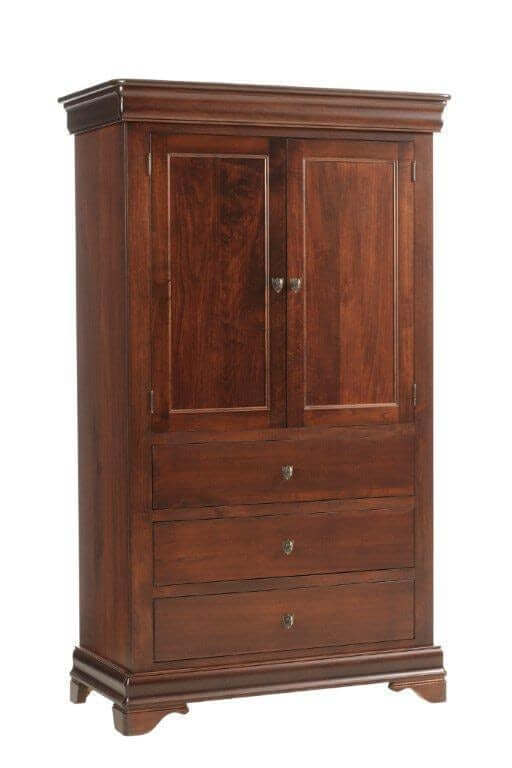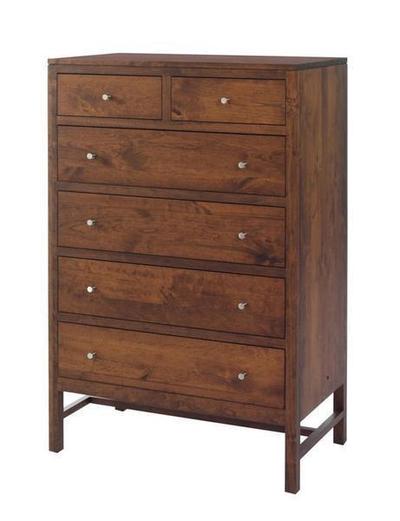
Things to Know About Dust Panels
The dust panel. Also called a dust shelf, dust guard or dust board. What does it do? Do you really need it? What does it add to a wood chest or dresser?
Let’s take a moment to think of a dresser drawer, sitting strong and quiet, holding your folded clothing, blankets, sweaters and socks. The drawer glides in and out smoothly, providing storage and support. What’s happening every time you open and close the drawer? What about those days when the drawer gets a bit overstuffed? How are the contents housed?
Every time we open and close a drawer, there’s a displacement of air. That whoosh of air stirs up dust particles and some of that dust can settle in the drawer. It was the movement and stirring up of dust that prompted the use of dust panels, or dust boards as they were called at the time, during the 17th and 18th centuries. During this time, dust panels or dust boards were helpful in keeping clothing stored free of dust as well as preventing little critters from crawling into drawers. The use of fireplaces and old style stoves contributed more dust and dirt to the air inside the house at the time and dressers used to have wooden slides that caused excess debris to accumulate. Dirt roads and homes heated by fire contributed to the need for dust boards.
What is a dust panel?
A dust panel is a horizontal wood panel or board that acts as a divider, or barrier, between drawers to eliminate dust and keep it off the drawer contents. The dust panel is located below each drawer and separates one drawer from another. It is like a bottom case that a drawer slides into. The dust panel does not pull out with the drawer, instead it is attached to the framework of the piece. It is like a frame within the frame, if you will.

What’s the purpose of a dust panel?
In olden times, the main purpose of a dust panel was to keep the inside of a chest–particularly the area around the stored clothing–clean, and that’s still true of them today.

Dust panels can help prevent a drawer from getting overstuffed as well as keep smaller items at the back of a drawer from falling down to a lower drawer. Keeping everything where it should be prevents you from having to pull out a lower drawer to fish out what’s fallen down to the back of it.
How does dust get inside my drawers?
As we mentioned above, dust can get pulled in from the air every time you open or close a drawer. It can also accumulate from fabrics stored in the drawer and the movement of clothing back and forth when drawers are opened and closed. Whatever settles on the items stored will be stirred with drawer movement.
Do I really need dust panels?
Dust panels were more readily included in the structure of a chest in the days of old, when vacuums did not exist, and stoves created more dust and debris in the air.
These days with modern conveniences to clean clothing, clothes just aren’t as dirty, and therefore don’t bring as much dust or debris into a drawer. However, dust panels are a fairly popular customization for solid wood dressers and chests, and it’s been said they add something to the structural support of the chests they are used in. They are authentic and their inclusion keeps your solid wood dresser true to the times it was first built, with dustboards and all.
They’re quite useful if there’s a vent under the dresser or close enough that it can stir dust and dirt up from the floor and into the dresser.
In addition to keeping out the dust, these handy dust shelves help prevent drawers from getting overstuffed and keep items from getting pushed out the back of the drawer to fall down to a lower one.
Are there any dust panel drawbacks?
The only possible drawback we can think of to mention about these handy little dust guards would be that if something jams the drawer, you cannot access the drawer from underneath because the dust panel is there.
Benefits of Dust Panels
- Keep dust from accumulating on your stored items
- Prevent sweaters from getting snagged when opening and closing drawers
- Prevent small items from falling from a top drawer down to a lower drawer
- Prevent drawers from getting overstuffed and jamming up the drawer above it
- Add strength to the structure and support of the chest
The final word on dust panels is up to you. Whether you have a lot of dust that gets stirred up regularly or not, the inclusion of dust panels will help to keep the contents of your dresser or chest clean.













